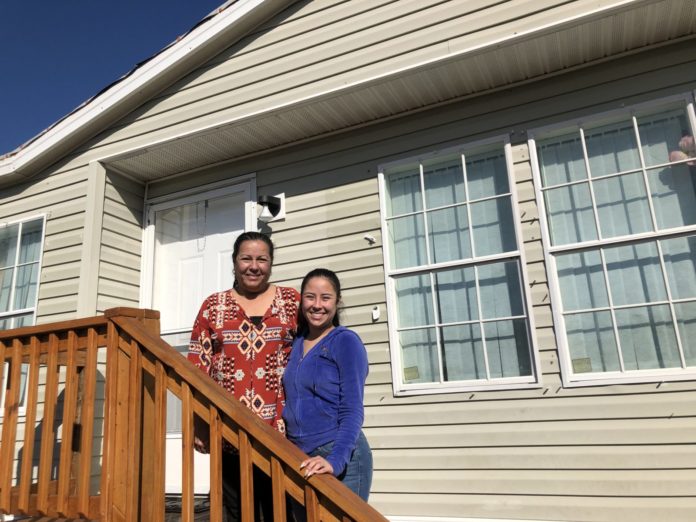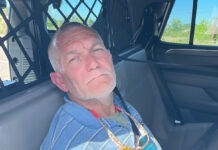
In mid-November, the American Red Cross redoubled its efforts in the Florida Keys post-Irma by sending out teams to canvass neighborhoods looking for affected residents. Seven weeks later, the funds it provided have finished five new roofs in the Keys, and six more are either being permitted or are under construction.
“We were so desperate that money was the least of our worries. My mother and I were going around asking for people who could help, do the work,” said Francelia Cabral who lives on 74th Street in Marathon with her mom, Nadia Guzman. The modular home’s roof was badly damaged, the steps swept away and the yard filled with flotsam. “We had no insurance and, with our incomes, no bank was going to give us a loan.”
Guzman gives the credit and thanks to “the church,” which is a great example of how this American Red Cross-funded initiative is perceived in the community. It is actually the work of many, beginning with the Monroe County Long Term Recovery Group (LTRG) headed by Michelle Luckett who is administering the program.
“Our partnership with the LTRG is crucial,” said Eric Corliss, executive director of the American Red Cross Hurricane Irma Recovery Program. “We provided the funding, but that group is doing the case management and identifying the homes. It’s a joint effort.”
Luckett works with case managers from the Florida Conference of the United Methodist Church, the “church” mentioned by Guzman. Rebecca White is one of those case managers and sees the phenomenon unfolding before her eyes.
“One of the roofs cost $11,000, another $26,000,” White said. “For some of my clients, the roof was the last step before they could move back in. For others, they need a roof so they can begin mold remediation inside. They are still people that need help 16 months after the storm.”
The Salvation Army and Keys Strong are also involved in this effort, as well as the roofers doing the actual work, like Dion Watson of Keys All Area Roofing. The company, founded well before Hurricane Irma lashed the Keys, has perhaps the best perspective on the program’s impact.
“We’re really proud to be a part of it,” said Watson. “What’s rewarding is when you can help somebody who busts their butt who lives here. We helped Habitat for Humanity with their homes, and we were really lucky to get involved with Michelle Luckett and the LTRG.”
This circle of collaboration hits home with Corliss.
“We need more of these kinds of stories,” Corliss said. “Each organization — nonprofit or business or government — played a part in helping these families rebuild their homes. Everybody does their part.”
The American Red Cross is planning another canvassing blitz of the Lower Keys in early February to identify more residents who can be helped, such as those on the substantially damaged lists complied by FEMA, Monroe County, City of Marathon and the American Red Cross damage assessment team. Some may have already received assistance and qualify for more; others may be first-time clients. Some families will qualify for the basic unmet needs. Others may also qualify for additional funds to address complex unmet recovery needs. It’s important to note that the qualifications are damage-based, not income-based.
“Some people have spent their life savings to make Hurricane Irma repairs, and they are going under water even though they make a good salary,” said Elmira Leto, of Keys Strong, when the American Red Cross funding was discussed in November.
Corliss said the American Red Cross has identified 2,100 families in the Keys who could qualify for help. But there may be more.

























